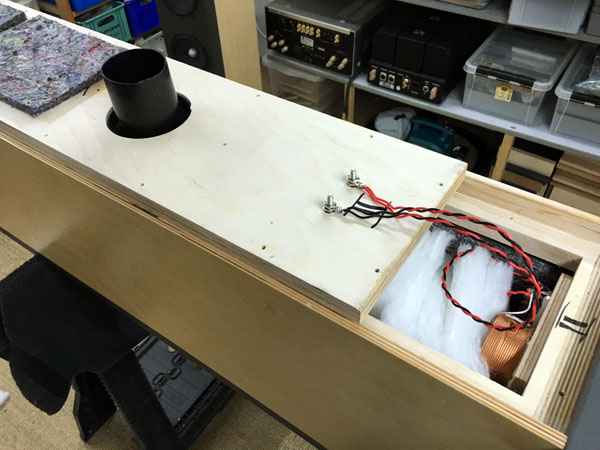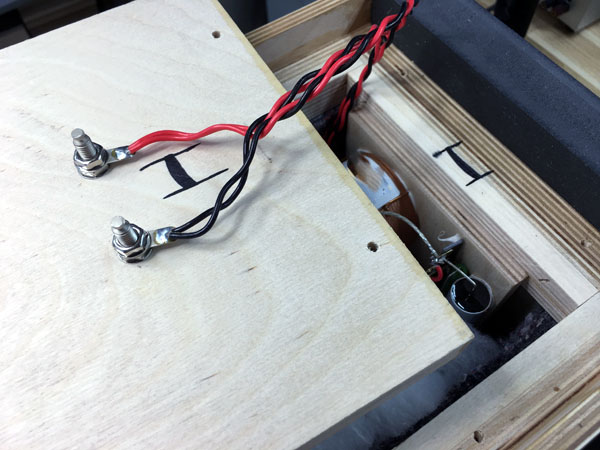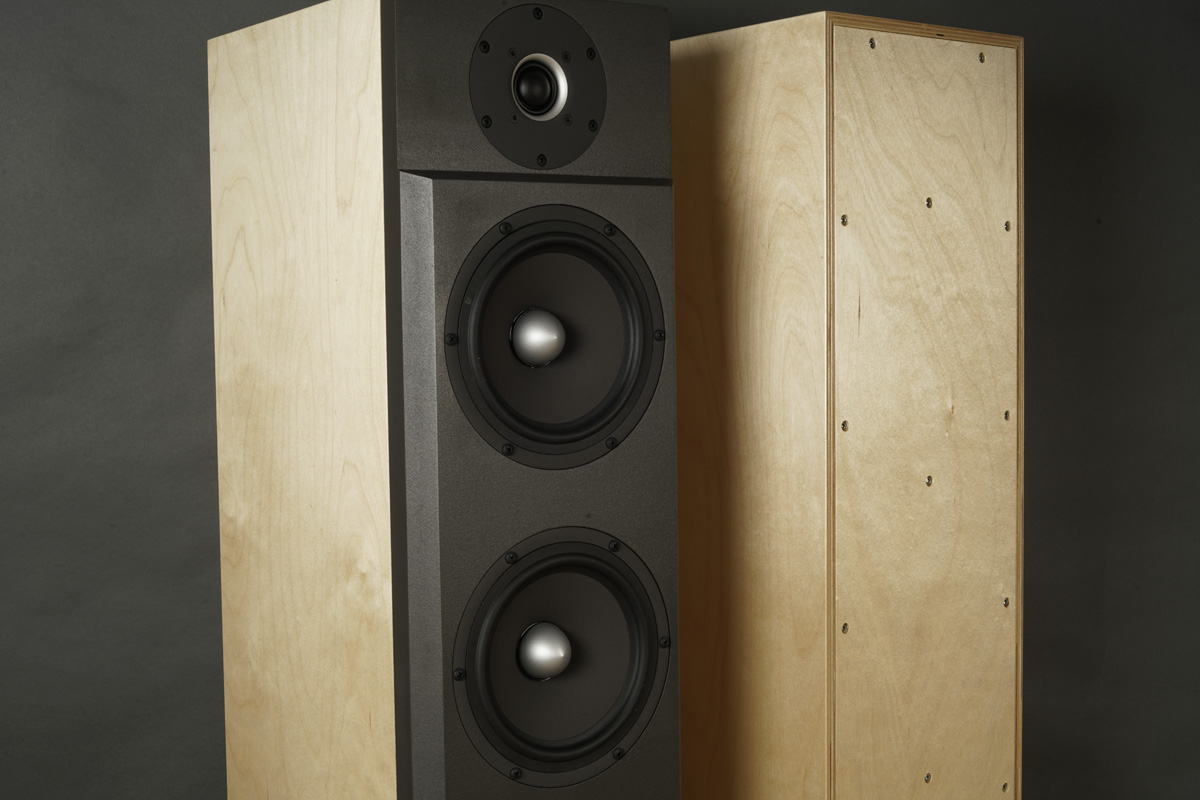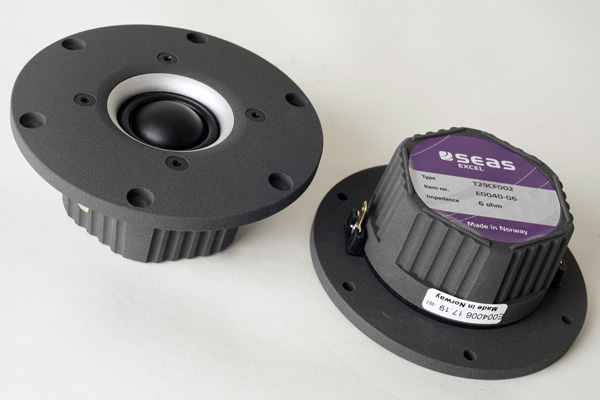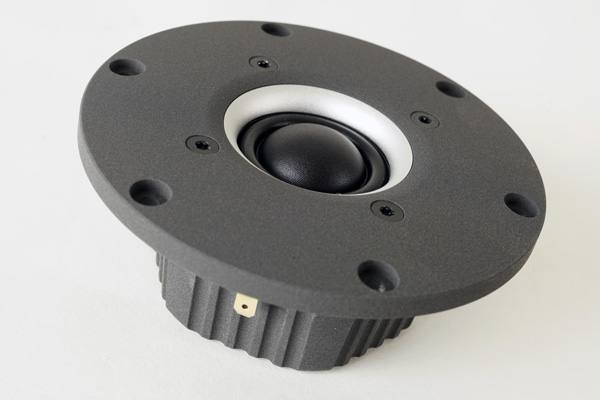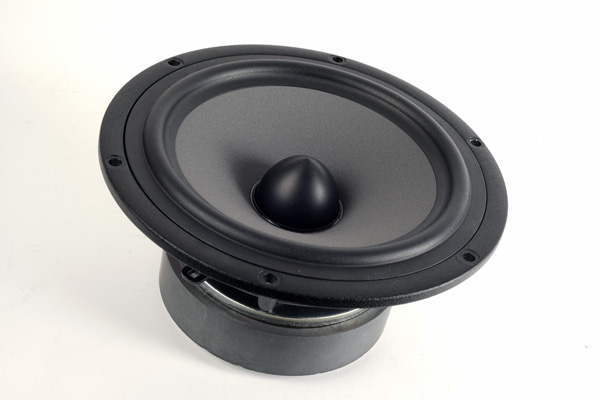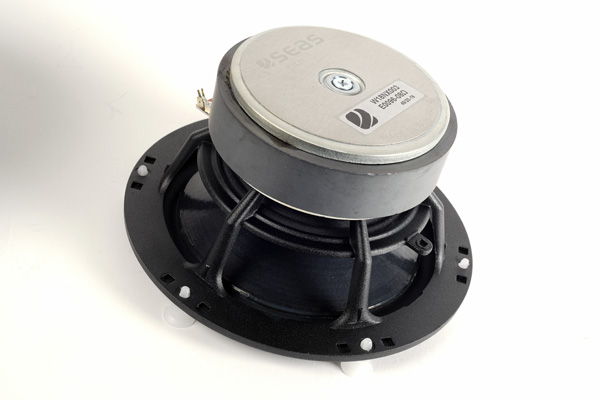DIY Loudspeakers: HOME INDEX UPDATES RESPONSE WHAT'S NEW
CNO-25-mkII
Copyright 2019 © Troels Gravesen
Go to on this page:
DRIVERS
CROSSOVER
CABINET
MEASUREMENTS
SPEAKER-KIT
CROSSOVER LAYOUT
11-01-2021: CNO-25-mkII updated with new SEAS W18NX003 driver. See below.
CNO-25-mkII is the second speaker in a range of upgraded CNO constructions.
First one was
CNO-mkIII and icing of the cake will be a 3-way from 2 x W18 + W12 + T29.
The text below is pretty much a copy-paste of the CNO-mkIII as the only
difference is the extra midbass driver.
If you want to change your CNO-25 to mk II or the new
CNO-GRANDE, you must make a list of the coils and caps you have. For
caps value and brand. For coils value and DCR. Send this to Jantzen
Audio and they'll see what can be taken out of the kit. Be prepared that
only a few components can be reused.
All of the new CNO constructions will require new cabinets.
The CNO speakers have been the best selling kits from the SEAS portfolio
- and for good reasons. These Nextel coated SEAS drivers just sounds
great and have found their way into some serious high-end speakers as
observed at Munich High-End Show in recent years. The SEAS range of
drivers pretty much falls into two categories of drivers, those who can
be run from 1st to 2nd order crossovers and those requiring steep 4.
order crossovers, the latter being the magnesium drivers and most
recently the graphene coated magnesium drivers.
My previous designs have featured 4th order series crossovers. I had a crush on series crossovers some ten year ago. I don't mind series crossovers at all, and sometimes we can find very simple solutions with series crossover like the 8008-CORNER, a crossover that could not have been made as simple from a standard parallel crossover. We never can tell before we have our final cabinets and drivers in place and start modeling and set up test crossovers to see and hear what works and what doesn't.
Now, quite a few people have found the quite elaborate 4th order series crossovers troublesome with regard to construction and implementation and from the last ten years experience in speaker design, series crossovers do not necessarily have an advantage in sound quality compared to parallel crossovers.
The Nextel coated drivers can do with a lot less than 4th order crossovers as can be seen here from the SEAS W18NX001 driver mounted on the Jenzen cabinets. The W18NX can be run 1st order by simple means, but whether this sounds good is to be heard. Just because something works technically doesn't automatically produce the best sound. It doesn't work that way.
It's been quite some time since I last heard these Nextel coated drivers
- and I'd forgotten how good they are. The 18WNX001 very much reminds me of my
current Ellipticor 18WE drivers. These SEAS drivers are as easy on
crossovers as the Ellipticors.
With default tweeter attenuation these speakers deliver a smooth and
balanced presentation with decent bass given their size.
I also have to say my front-end is much better than back then. I really didn't hear what these drivers could
do back in 2007 when I did my first CNO.
The smooth response of the mid-bass drivers and shallow crossover
present a naturalness and ease of listening I have come to appreciate
from my reference speaker.
In a coming study I'll dig into the importance of low linear distortion,
in particular in the 800-2000 Hz range, where we often have rubber
resonances from the surround causing rapid change in amplitude and phase
and significantly impacts the sound perceived. In short, the dip in
frequency response often seen here causes a rapid change in phase and
creates a presence feeling that may be seducing to the ear as it
projects the soundstage forward into the room, where in fact, the music
should start at the plane of the front panel and extend as deep as
possible behind the speaker. BTW: I've always found 4. order filters to
have this presence effect, which may be desirable and taste cannot be
argued. A study was performed with a 4" midrange driver having a
significant dip at 1.5 kHz and where an edge-coating of the rubber
surround produced ruler-flat amplitude and phase. The two drivers were
tuned to exactly the same amplitude, and basically having the same frequency response,
except for the dip and phase shift of one driver, were set up aside and
run full-range covered with a front grille. People were invited for a blind test to evaluate the
sound and were generally pretty shocked when they were told what they'd
be listening to. More on this later. For my self this study has meant
I'll never again to into a demo room without thinking what kind of
linear distortion I may be subjected to.
The CNO-25-mkII is not a speaker particularly demanding on source
material. I hate to say they're forgiving, because forgiving is often
associated with lack of detail and transparency. These W18NX drivers are
in no way short of detail and transparency but the intrinsic smooth
response - as for the Ellipticors - pays off in an ear-friendly overall
presentation. If they turn edgy, we haven't done our crossover work
properly - or we play too loud.
Adding to the positive is the 1st order filters, for the mid-bass
drivers well beyond point of crossover and for the tweeter down to point
of crossover, where it starts descending 2. order, but with an overall
proper phase integration given the stepped baffle and time-alignment.
The CNO-25-mkII presents a more powerful bass compared to the
CNO-mkIII. Two mid-bass drivers can obviously move more air compared to a
single driver and although it doesn't go deeper - on paper - it feels
so. And the increased sensitivity is felt too. My 32 wpc EAR-861 has no
trouble running these 90 dB speakers higher than they should from their 4 Ohms
tabs.
Oh, and I had forgotten what a phenomenal tweeter this Crescendo T29CF002
is. One of the true high-end tweeters. On top of all this, these EXCEL drivers come with an impeccable finish. Lovely pieces of engineering.
BTW: I have two 18WNX001 drivers some ten years old and I was
pleased to find that they performed exactly the same as the new ones
supplied by SEAS. And this goes for the W12CY003 as well, meant for the
coming CNO-3-way. We pay for this consistency in production - and it's worth
while.
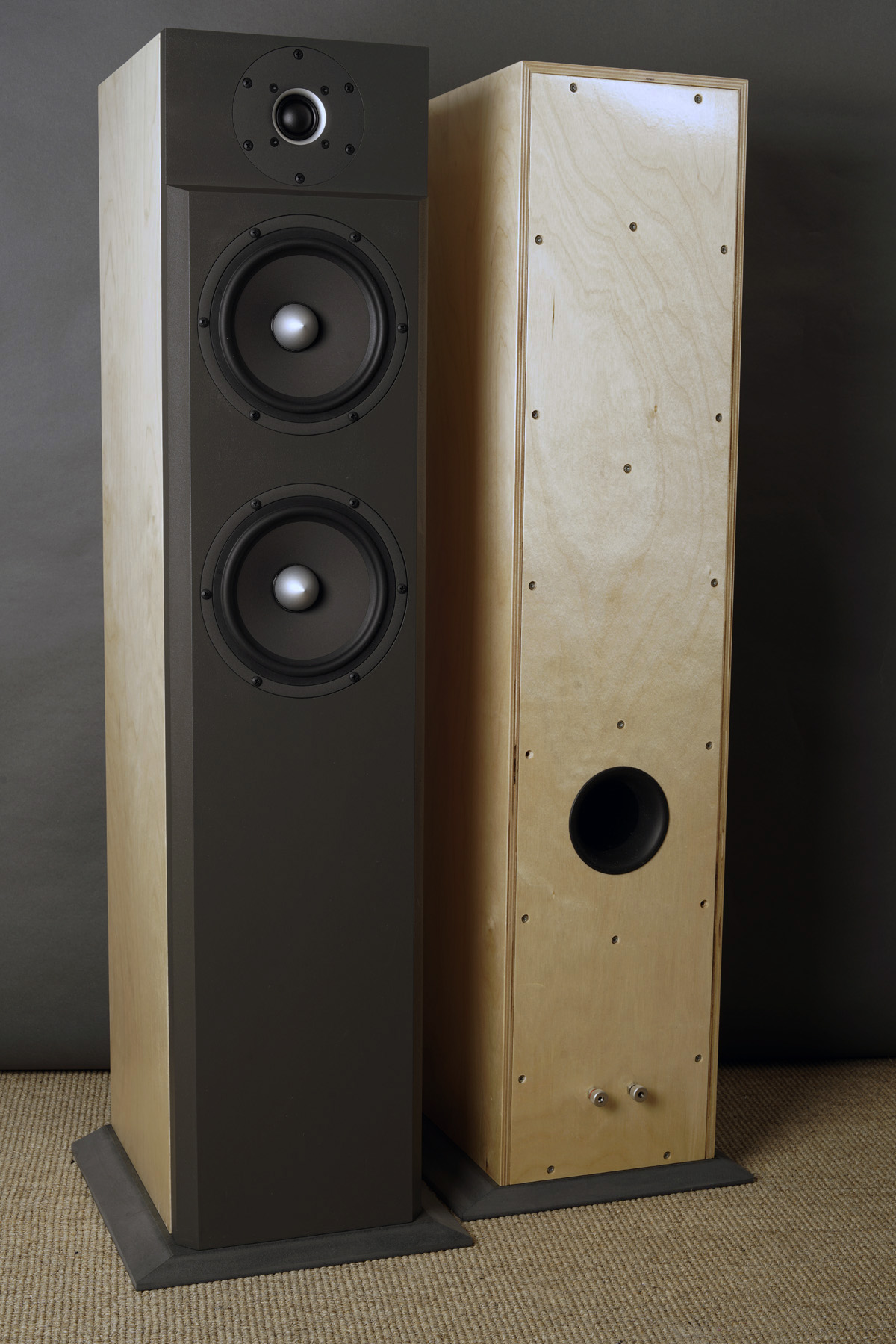
Basics:
2½-way, 3-driver speaker
Dimensions: 22 x 30 x 100 cm, WxDxH.
System sensitivity: 91 dB/2.8V/1 meter.
Impedance: 4 Ohms
Point of crossover: 2500 Hz, LR2 crossover.
Power requirement: 20+ watts/channel.
Power handling: 160 watts. Please
also read:
http://www.troelsgravesen.dk/power-handling.htm,
and remember any burned driver is a misused driver.
Useful links:
http://www.troelsgravesen.dk/tips.htm
http://www.troelsgravesen.dk/crossovers.htm
http://www.troelsgravesen.dk/LCR-RC.htm
FAQ:
You cannot change cabinet front panel dimensions and drivers' placement
without needing a new crossover - and I cannot help.
You cannot use any other drivers with the crossover shown here.
Please read these files before e-maling:
http://www.troelsgravesen.dk/crossovers.htm
http://www.troelsgravesen.dk/choices.htm
Click images to view large
Download driver specs: T29CF002 W18NX003
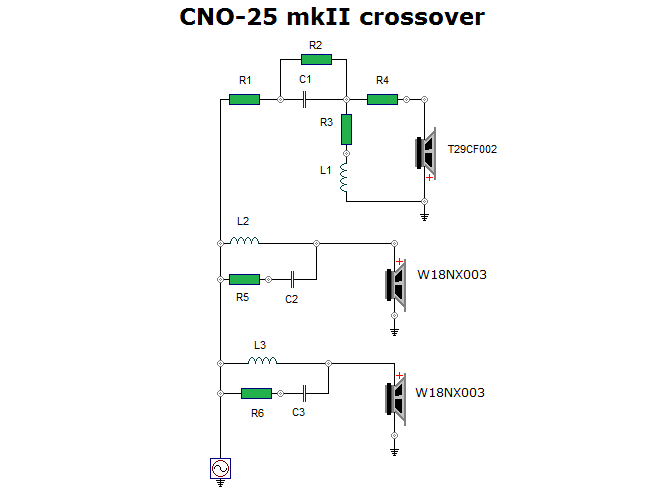
The crossover hardly gets less simple than this.
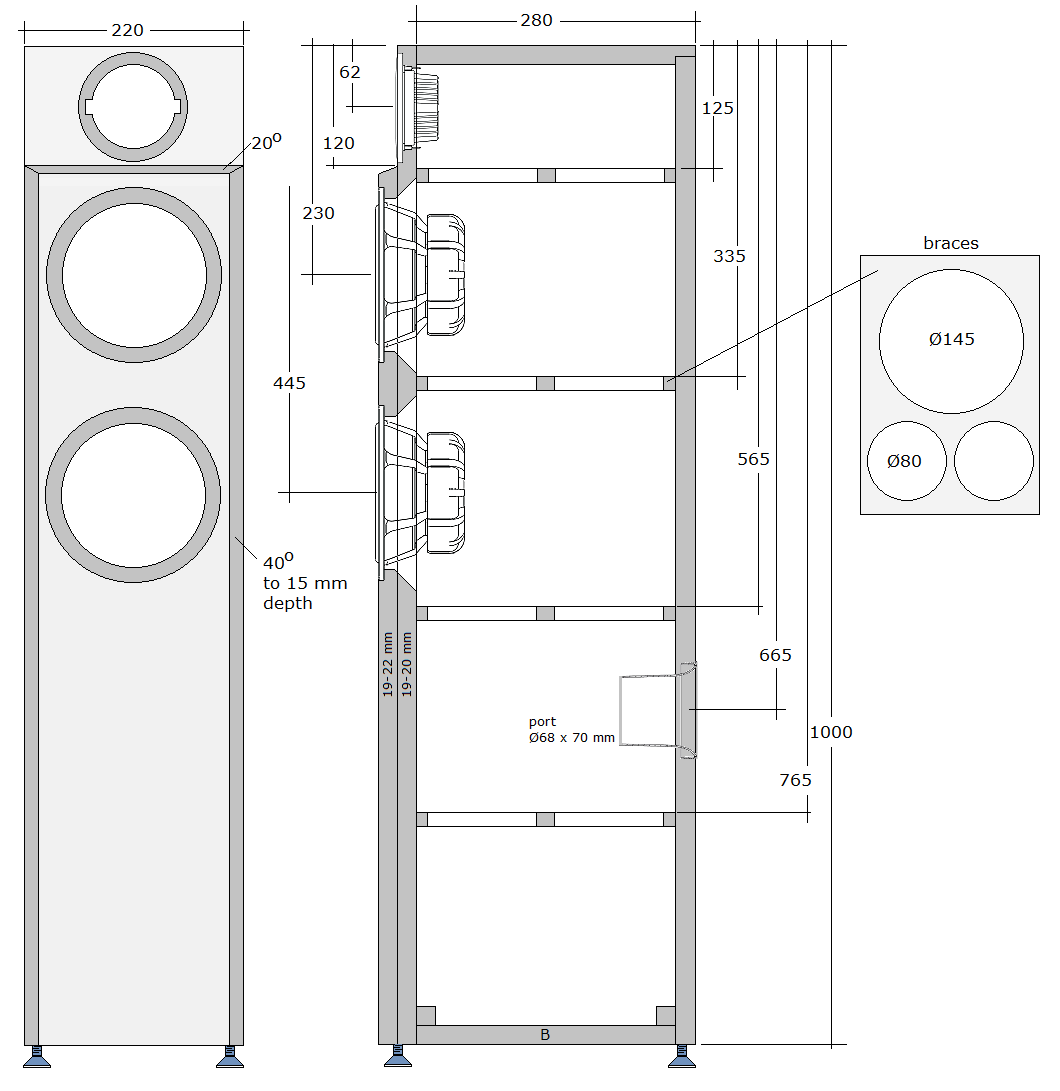
The cabinet volume is ~45 litres, giving an F3 = 42 Hz. Port is tuned to
42 Hz from Ø68 x 70 mm.
Key issue here is having the correct panel width and drivers' placement
with regard to the top of the cabinet. The outer front panel is
chamfered 45 deg. to a depth of 15 mm. Top of outer front panel is
chamfered 20°.
Cabinet damping:
Add 8 mm felt to all internal panels except from panel where drivers are
placed.
Add two layers of acoustilux at top of cabinet.
Add four layers of acoustilux at bottom.
Add two layers of acoustilux behind 18W drivers on rear panel.
The key issue here is eliminating standing waves between top and bottom,
hence the many layers.
Place crossover at bottom of cabinet and attach bottom panel B with screws for access to the crossover.
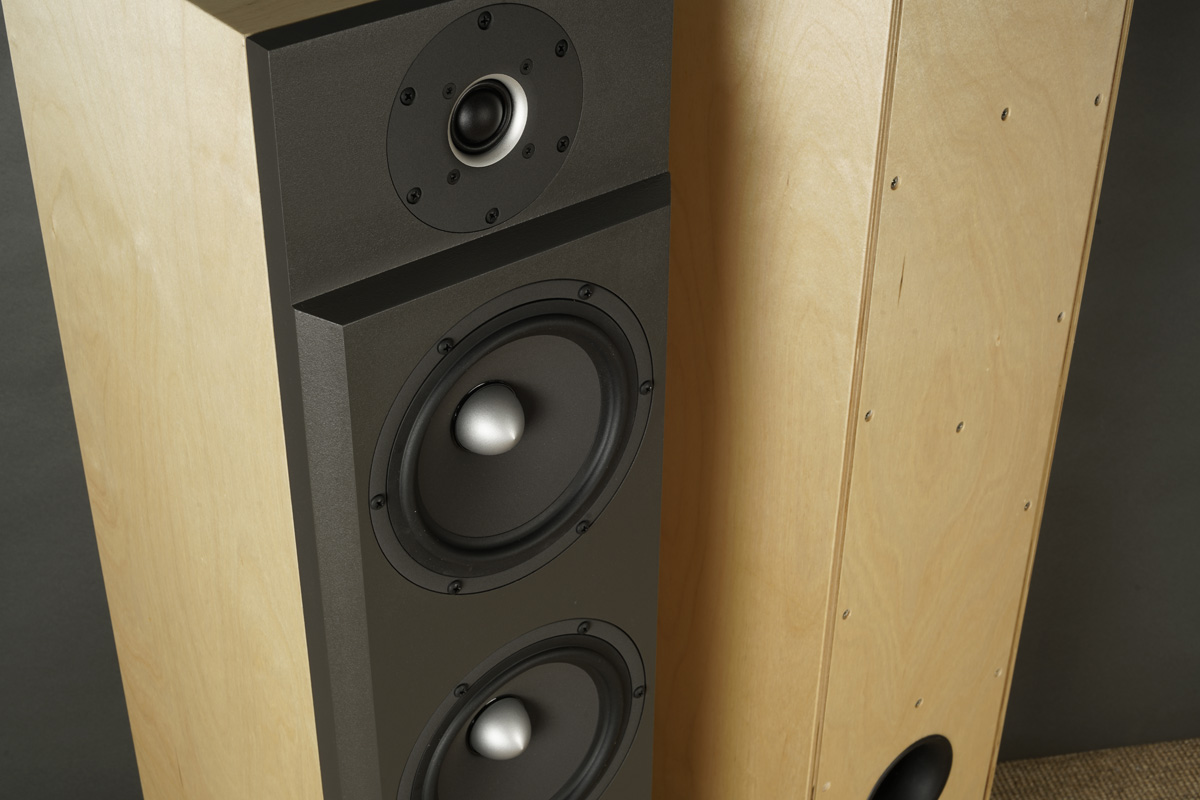
Workshop images
I won't show a lot of workshop images this time as it will be a repetition of so many former floor-standers. I suggest taking a look at Ekta mkII and similar constructions for inspiration. Cabinets can be made in numerous ways and render the same positive result. Only thing to remember here is to maintain the stepped baffle, baffle dimensions and drivers' placement.
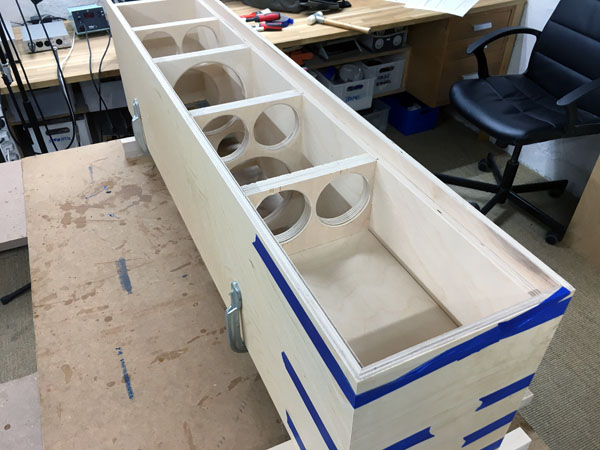
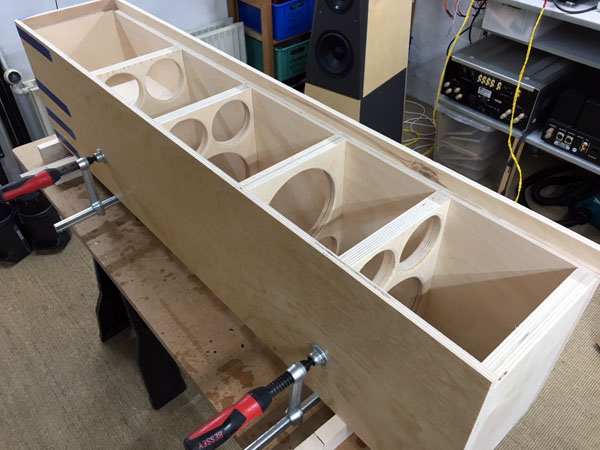
Cabinet pics above from the CNO-GRANDE.
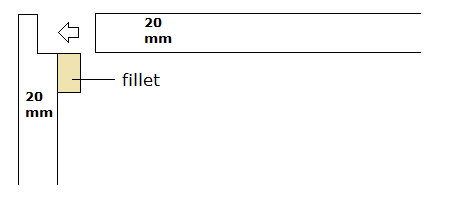
I used 20 mm panels throughout, not laminated as I often have the
question.
What you see is a rebate for the rear panel, not laminated panels.
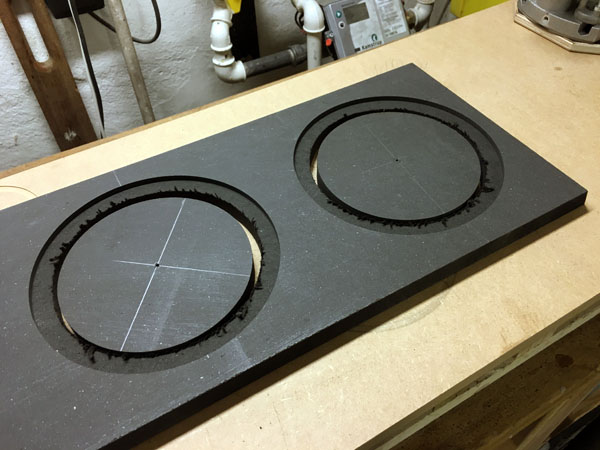
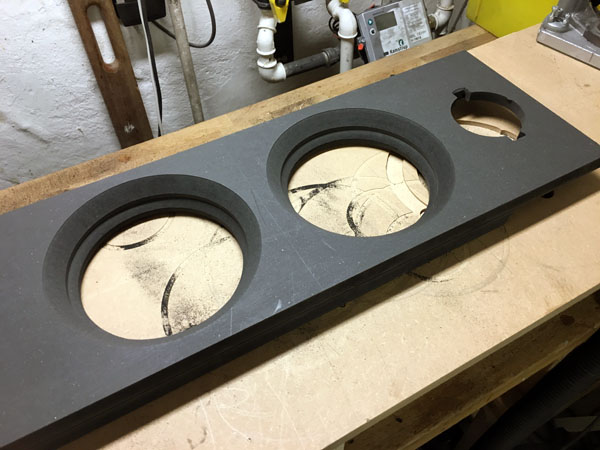
Remember to chamfer driver holes properly not to make any acoustic
resistance to the rear radiation of the driver.
If not, bad things may happen, read
here.
http://www.troelsgravesen.dk/tips.htm#Router_guide
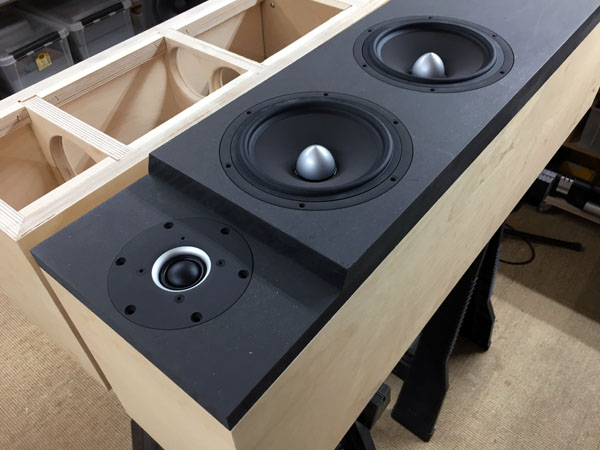
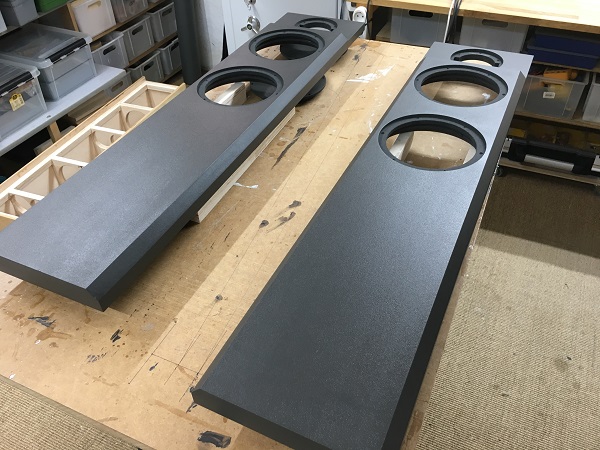
Testing driver routings and finished front panels after paint.
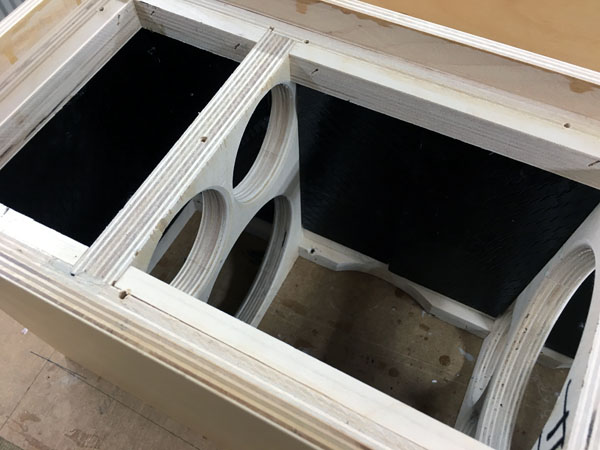
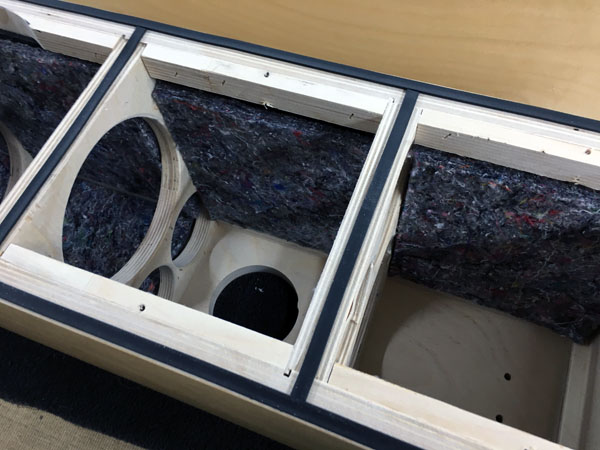
Bitumen pads and felt damping.
The bitumen pads are optional and
must be added to your order.
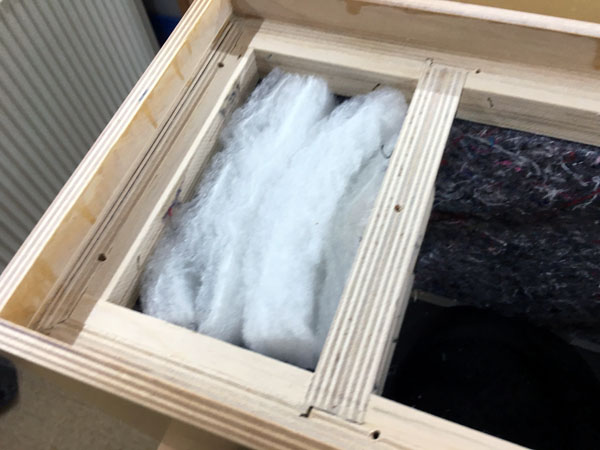
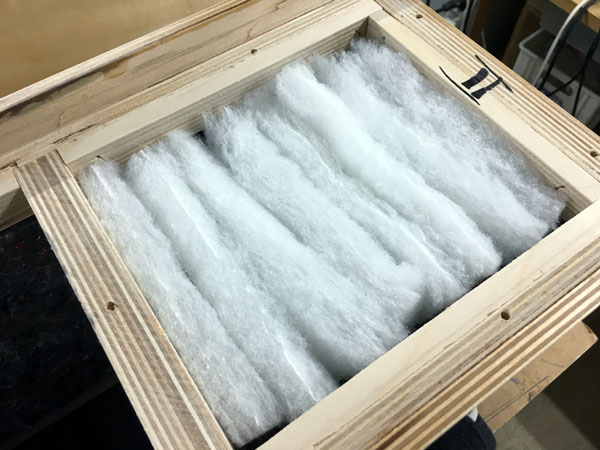
Add 4 layers of acoustilux to top of cabinet and 8 layers at bottom. Cut
15 x 50 cm pieces of acoustlux and fold.
All this to eliminate standing waves between top and bottom, the usual
problem with tall floor-standers.
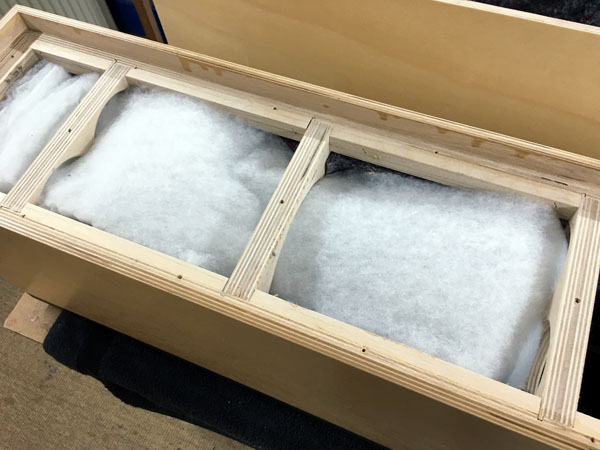
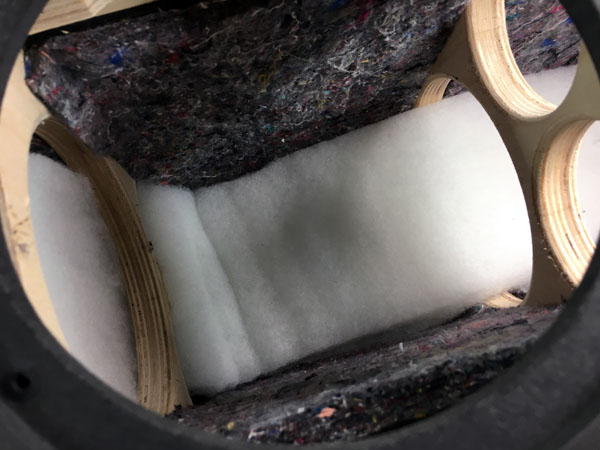
Add two layers of acoustilux behind midbass drivers, here seen from
behind and front.
A few comments on
MEASUREMENTS before you start interpreting the readings below.
First of all, if we think measurements will
tell us how a speaker sounds, we're wrong. The perception of sound is
way too subjective to be reflected in any measurements we can perform. A
loudspeaker system is meant to give us a satisfying idea of an acoustic
event and for some people a pair of 5 USD ear-plugs are enough, others
spend 200 kUSD on a truly full-range pair of speakers - and the latter
may not be happier than the former.
Measurements may give us an idea of tonal balance of a system, i.e. too
much or too little energy in certain areas, although dispersion
characteristics play a vital role here. A two-way 7+1 and a three-way
7+4+1 may display similar horizontal dispersion, yet sound very
different. Measurements may tell us about bass extension if far-field
measurements are merged with near-field measurements. In addition to
this, ports may contribute to bass extension. Most of we diy'ers do not
have access to an anechoic room for full-range measurements from
20-20000 Hz.
What cannot be seen is what kind of bass performance we get in a given
room. Bass performance is highly dependent on in-room placement of your
speaker and the same speaker can be boomy in one place and lean in
another. Actual SPL level at 1 meter distance and 2.8V input is useful
for en estimate of system sensitivity and combined with the impedance
profile may give an idea of how powerful an amplifier is needed to drive
the speaker to adequate levels.
What measurements do not tell is the very sound of the speaker unless
displaying serious linear distortion. The level of transparency, the
ability to resolve micro-details, the "speed" of the bass, etc., cannot
be derived from these data. Distortion measurements rarely tell much
unless seriously bad, and most modern drivers display low distortion
within their specified operating range.
Many people put way too much into these graphs and my comments here are
only meant as warning against over-interpretation. There are more to
good sound than what can be extracted from a few graphs. Every graph
needs interpretation in terms of what it means sonically and how it
impacts our choice of mating drivers, cabinet and crossover design.
What measurements certainly do not tell is the sonic signature of the
speaker, because speaker cones made from polypropylene, aluminum,
Kevlar, paper, glass fiber, carbon fiber, magnesium, ceramics or even
diamonds all have their way of adding spices to the stew. Nor do
measurements tell what impact the quality of the crossover components
add to the sound, from state of the art components to the cheapest of
coils and caps, they all measure the same if values are correct, yet
sound very different.
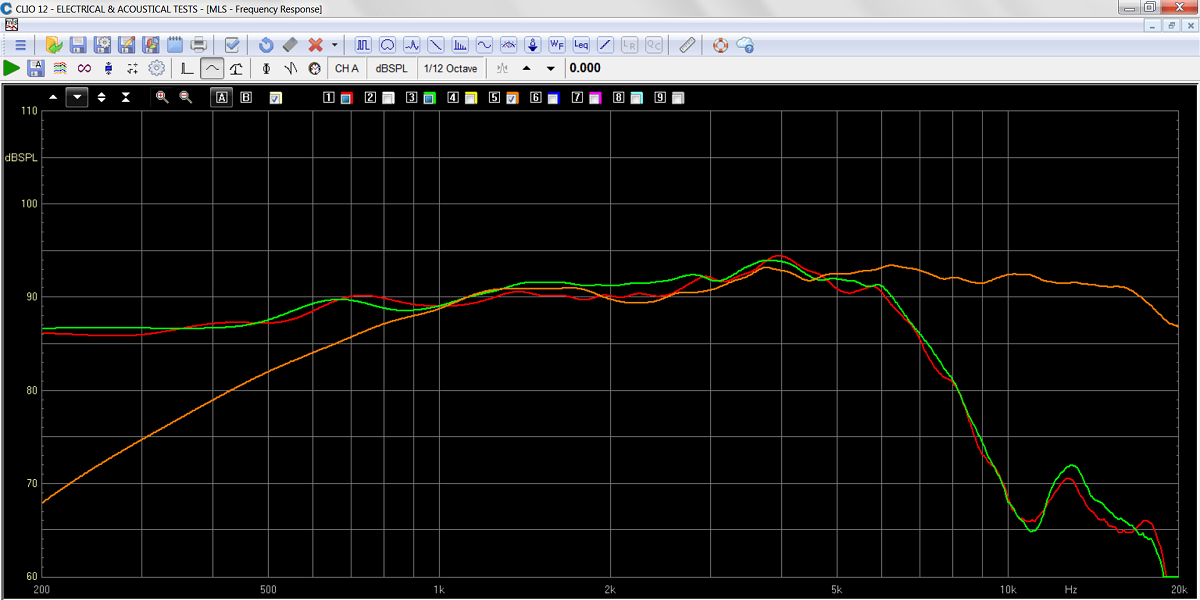
Response of all drivers without crossover. Upper and lower bass almost
the same, red and green.
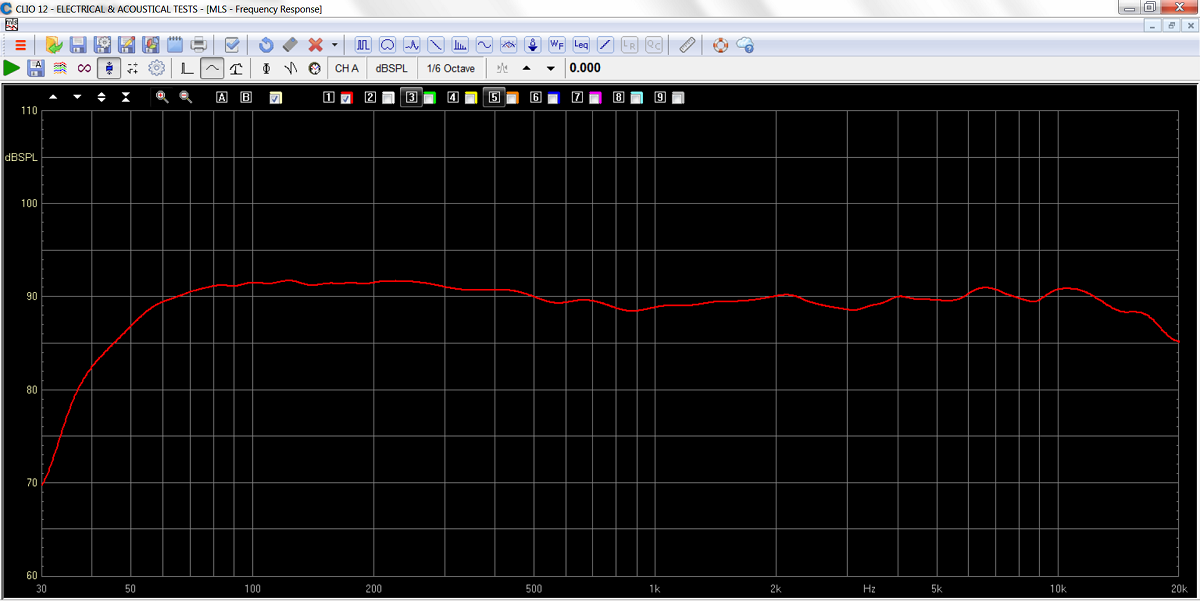
Final system response. System sensitivity ~90-91 dB/2.8V/1 meter.
Far-field response merged with bass and port near-field response at 300
Hz.
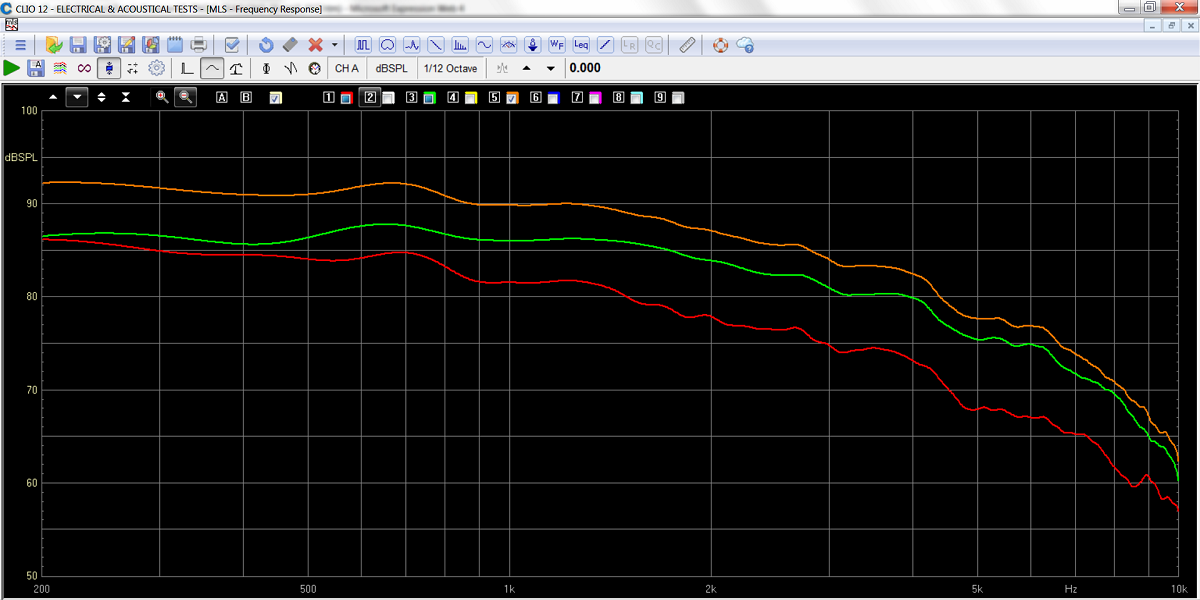
Response of upper and lower bass driven from crossover. Summed response
orange.
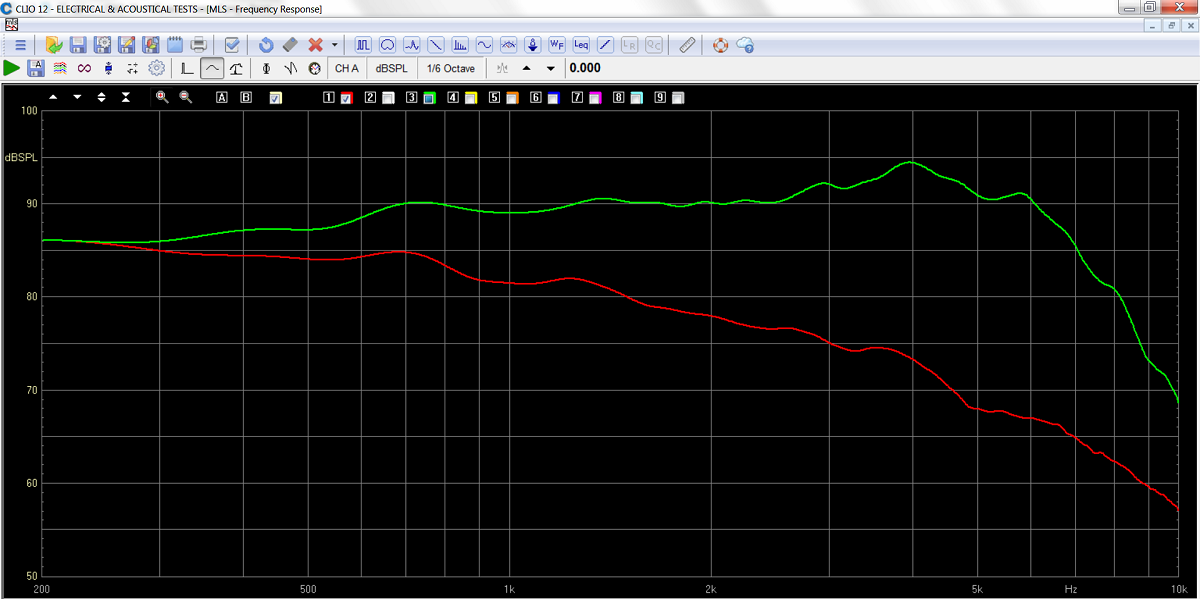
Response from lower bass w/wo crossover.
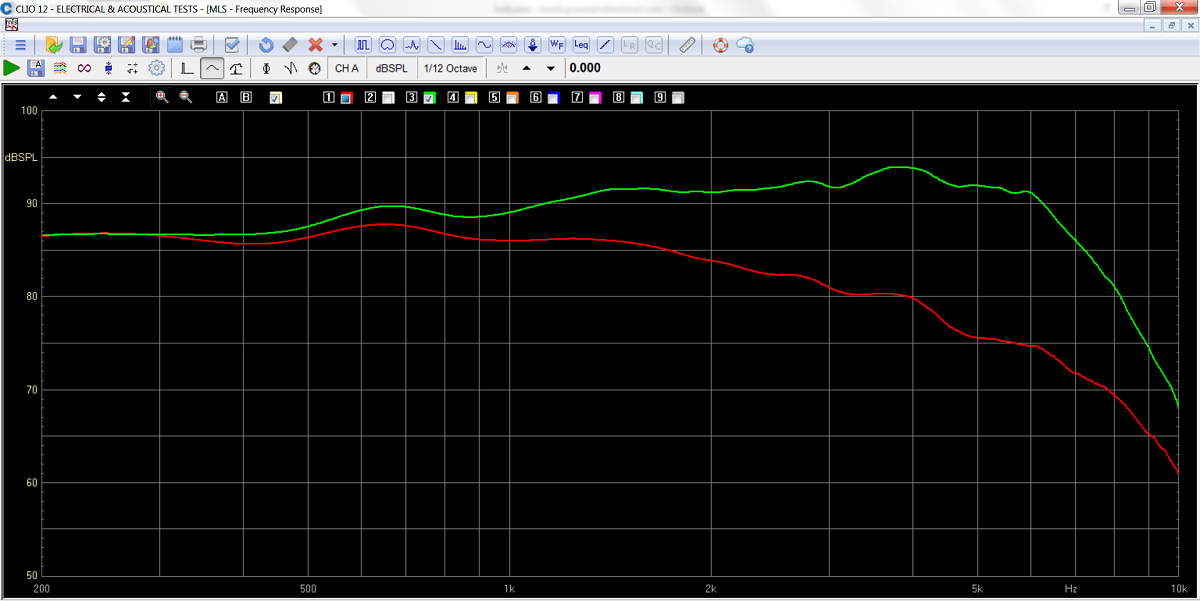
Response of upper bass w/wo crossover. As smooth as can be.
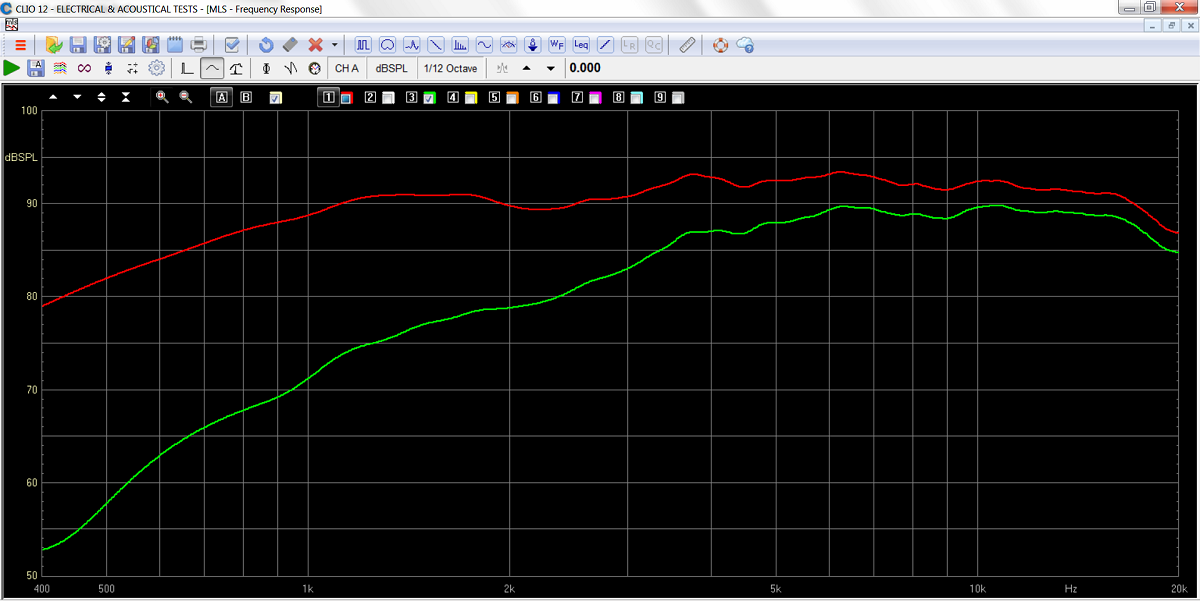
Tweeter response, w-wo crossover.
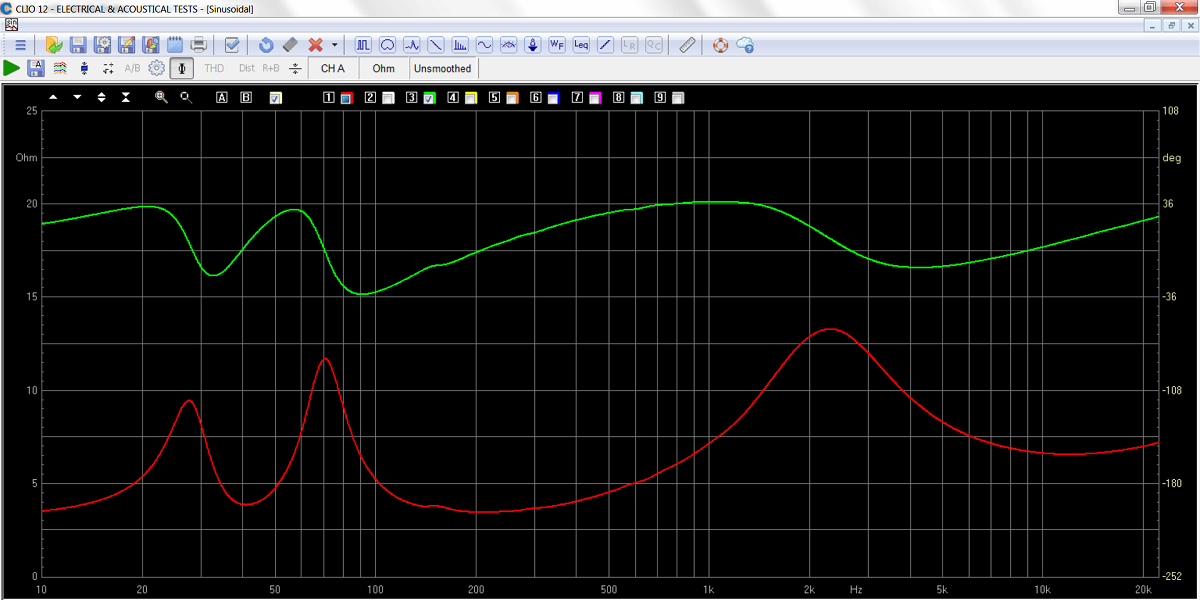
Final system impedance. Port tuning can be seen to be around 40-42 Hz.
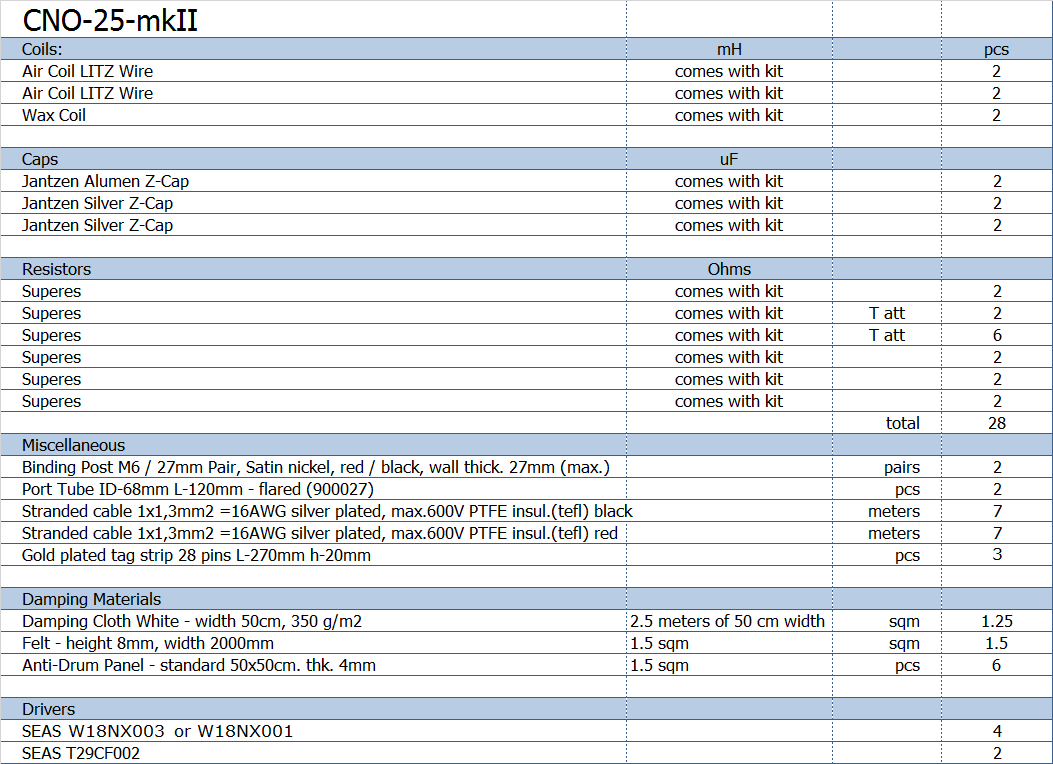
Note there are 4 extra resistors for tweeter
attenuation ("T att").
The bitumen pads are optional and
must be added to your order.
The kit can be ordered with W18NX001 or W18NX003 drivers.
All kit and component prices may be subject to change and are always to be confirmed by Jantzen Audio Denmark.
Download Kit
Sale Presentations:
All technical questions to troels.gravesen@hotmail.com
All questions regarding purchase of kits, please mail Jantzen Audio at contact@jantzen-audio.com
CROSSOVER-LAYOUT
BACK TO INDEX
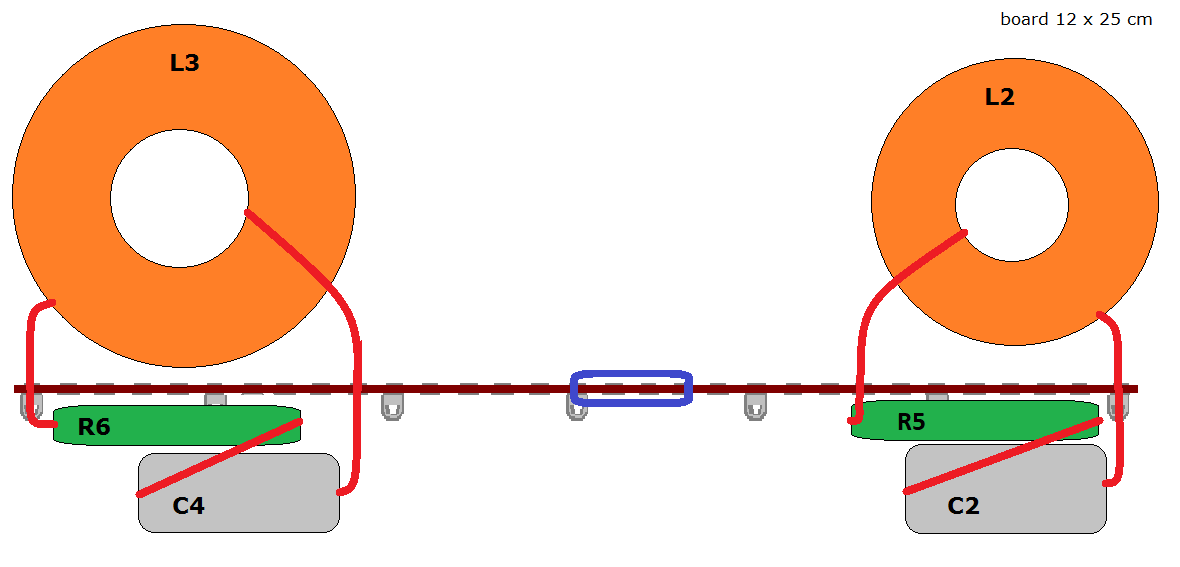
Crossover layout for midbass drivers
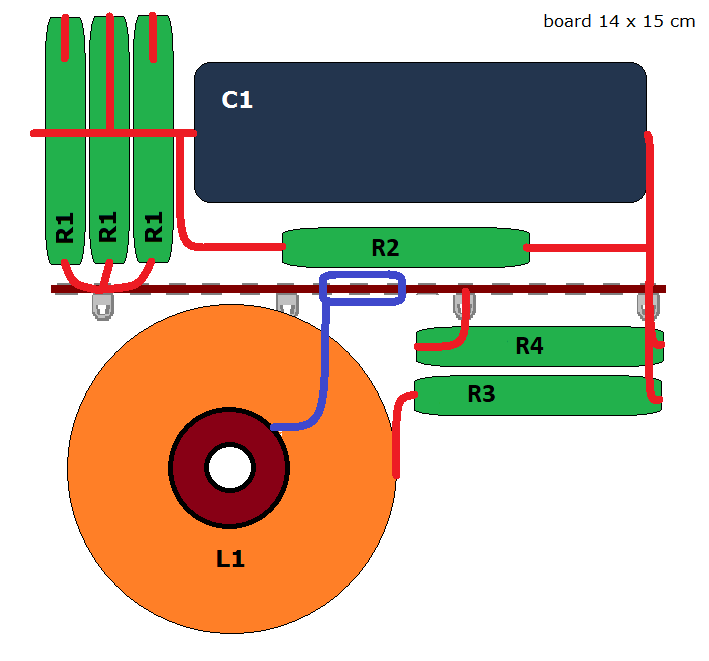
Crossover layout for tweeter (place on front panel)
You must connect only one of R1 resistors to C1.
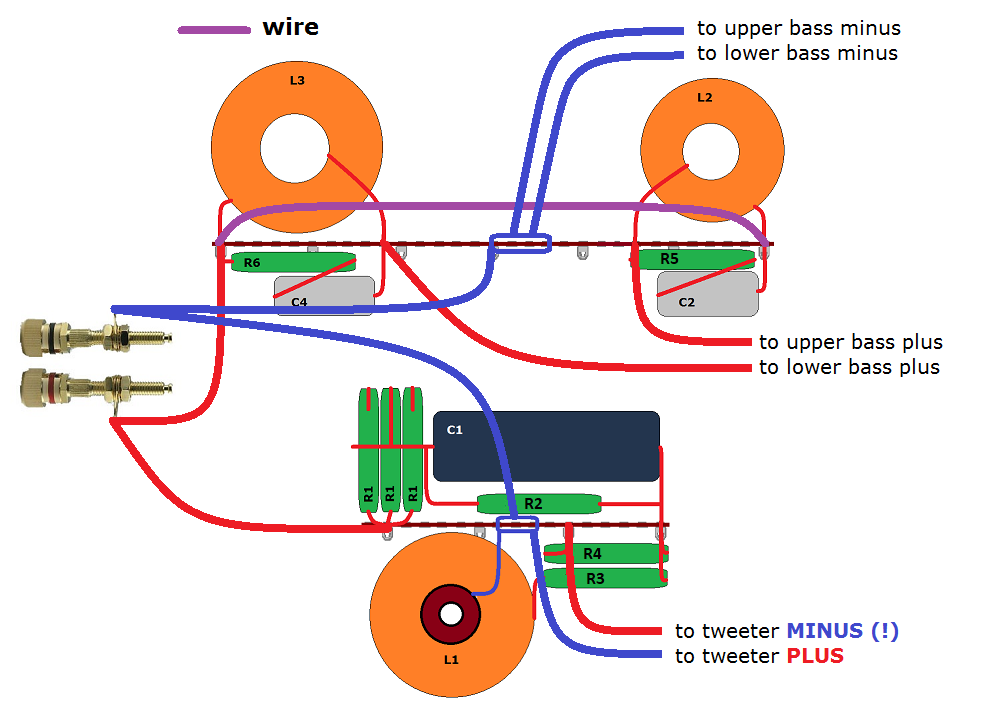
Speaker wiring, note tweeter with inverted polarity.
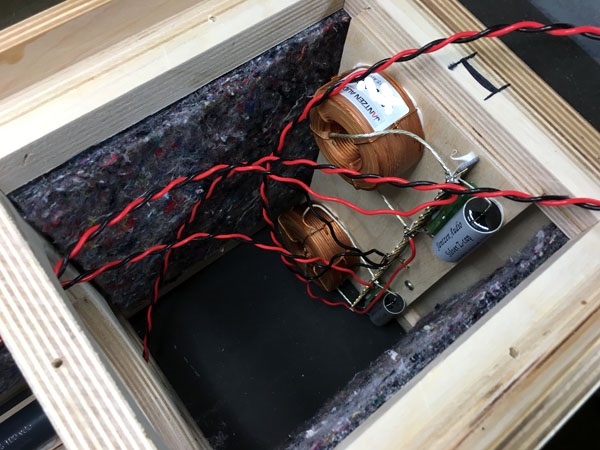
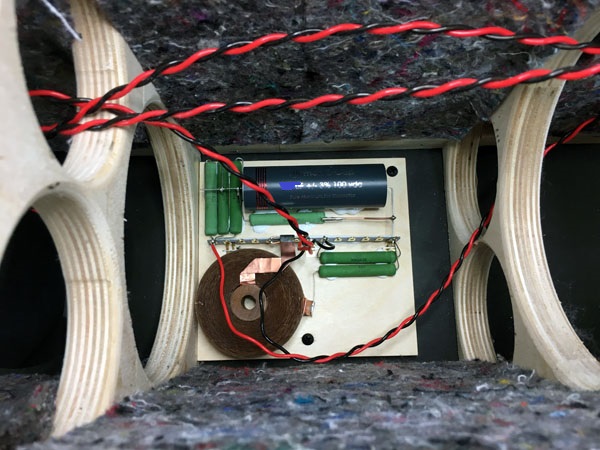
Bass crossover at bottom of cabinet and
tweeter section here in 2nd section from bottom.
